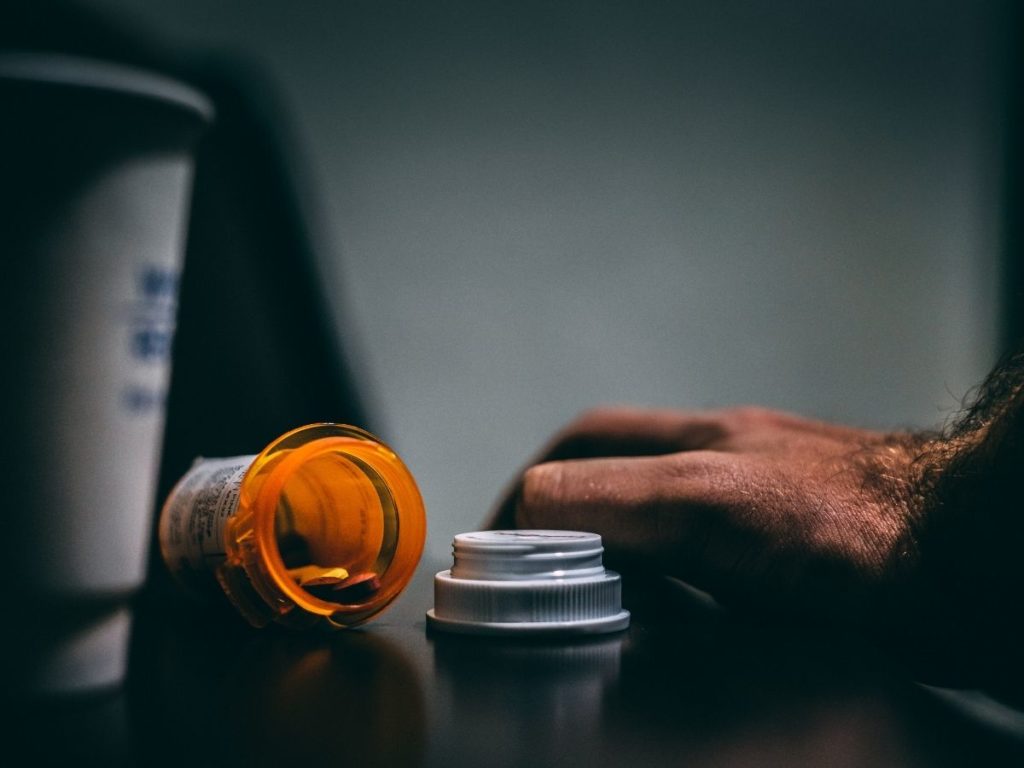What Is Dilaudid?
Dilaudid (Hydromorphone) is a schedule II controlled substance prescribed for moderate to severe pain. The drug attaches to receptors in the brain and central nervous system (CNS) to dull pain. Dilaudid also triggers the release of excessive amounts of dopamine in the brain, causing pleasurable feelings. This activates the reward center of the brain, which interprets the event as something that is important and should be repeated. The more this happens, the less the brain will naturally produce dopamine, and the more reliant the body becomes on Dilaudid.
Doctors prescribe Dilaudid for pain related to cancer and serious injuries such as burns. The time it takes for the drug to take effect varies depending on how it is taken. When taken orally, Dilaudid typically takes effect within 30 minutes to an hour. When used intranasally, it typically takes 5 minutes; its effects are almost immediate when taken intravenously. Regardless of the method of administration, the effects of Dilaudid typically last between four and six hours.
Doctors typically prescribe Dilaudid tablets in small doses. Some pills are round, and some are triangular. Dilaudid is also available as an oral liquid. In a hospital setting, doctors may administer the substance intravenously. Other brand names for Hydromorphone are Exalgo, Palladone, and Dilaudid-hp. Street names include D’s, Dillies, Big D, M-80s, and Peaches.

Addiction To Dilaudid
Dilaudid is one of the more powerful Synthetic Narcotics in the Opioid class of drugs; an addiction to the substance can rapidly develop through continued use. People regularly take Dilaudid to build up a tolerance to the drug, requiring larger and more frequent doses to get the desired effects.
Users can develop a tolerance to the substance within two or three weeks. Once a tolerance takes hold, users taking the pills more frequently often finish their prescription ahead of schedule. This is due to the regular dose no longer working the same way on the body as it once did and can result in physical dependence or addiction even if the user is taking the medication as prescribed.
Those with tolerance may experience withdrawal symptoms once the drug wears off. Someone who wants to stop taking the substance but isn’t able to may have an addiction. Other signs of an addiction include:
- Becoming obsessed with the next dose
- Spending excessive amounts of money on the drug
- Failing to keep up with responsibilities, such as school and work
- Needing larger doses to feel high
- Neglecting friends and family in favor of drug use
- Stealing from medicine cabinets
- Forging prescriptions
- Purchasing Dilaudid online or off the street
Many people addicted to Dilaudid may “doctor shop” for new prescriptions, visiting several doctors with complaints of chronic pain. Additionally, it is not uncommon for substance abuse to lead to criminal activities in users.
Who Abuses Dilaudid?
The NSDUH of 2014 found that the highest percentage of people abusing prescription opioids were between the ages of 18 and 25. The DEA reports that suburban and rural populations are more likely to abuse hydromorphone specifically and that diversion occurs most often through forged prescriptions, going to multiple doctors for prescriptions, pharmacy robberies, thefts of the medication from nursing homes, armed robberies, and direct and illegal diversion from pharmacists and physicians.
On the street, Dilaudid is known as footballs, dust, smack, dillies, juice, and D. Opioid drugs like Dilaudid are popular with recreational users, likely because of the way the drugs interact with opioid receptors in the brain and along with the central nervous system. They disrupt the flow of some of the brain’s natural messengers, signaling pleasure and dispelling anxiety and stress.
Dilaudid is a full opioid agonist, meaning that it fills opioid receptors and mimics some of the brain’s normal functions, including how these natural chemicals are reabsorbed. This can create a kind of backlog of some of the brain’s messengers like dopamine and its natural endorphins. Endorphins work to regulate emotions, and dopamine is the brain’s chemical messenger that tells a person when to feel happy. When this drug floods the brain due to the inability to be reabsorbed naturally, or through artificial stimulation of its production, it can cause an unnatural spike in euphoria, or a “high” that recreational drug users may strive for.

Being a more potent opioid than many others, Dilaudid is commonly sought by people wishing to feel this intense high. Dilaudid has a short onset of action of 10-15 minutes, which is desirable to users as well.
Dilaudid may be abused by swallowing the tablets, chewing them, crushing and snorting or smoking them, or by injecting the crushed tablets after mixing them with liquid. The DEA published that as of 2011, 1 million people aged 12 and older had used Dilaudid recreationally, or for nonmedical purposes, at least once in their lives.
What Is Dilaudid Detox And Withdrawal?
An individual taking Dilaudid, even for legitimate reasons, can become dependent on the drug in as little as two or three weeks. Dilaudid abuse can lead to both physical and psychological dependence quickly. At this point, users can no longer function normally without the drug and addiction has developed.
People addicted to Dilaudid experience uncomfortable withdrawal symptoms, such as sweating and cramps, when they quit taking the drug. This is the body’s response to not receiving its expected dose.
It is never advisable to discontinue Dilaudid without medical supervision. Withdrawal from Dilaudid can cause dangerous complications, such as vomiting. Physicians during medical Dilaudid detox can prevent these outcomes and provide immediate care if complications arise.
Symptoms Of Withdrawal
Those in withdrawal from Dilaudid may appear cold and clammy, with flu-like symptoms. Withdrawal symptoms from this drug are similar to those of heroin withdrawal. Common withdrawal symptoms include:
- Muscle and bone pain
- Diarrhea
- Restlessness
- Tremors
- Intense drug cravings
- Body cramps
- Sweats
- Shaking
- Vomiting
- Anxiety
- Agitation
- Elevated blood pressure
Duration Of Withdrawal
Everyone has a different duration of withdrawal. Withdrawal generally lasts between 7 and 14 days, depending on the severity of the addiction. Several factors affect how long it lasts, such as the length of time the person abused Dilaudid, how frequently they used it, how much they used it, whether they also abused other substances, their mental and physical health, and how they took Dilaudid.
Those who took large doses of Dilaudid for an extended amount of time generally have a longer withdrawal period than those who took smaller doses. Users taking other drugs in addition to Dilaudid may also have a longer withdrawal period.
Dilaudid Withdrawal Timeline
- First Hours: The user experiences the initial symptoms of withdrawal just hours after the last dose of Dilaudid. Initial symptoms may include restlessness and anxiety.
- Days 1-2: Symptoms peak somewhere after the first 14 hours of quitting. Users may start experiencing nausea, shaking, muscle aches, chills, and sweating.
- Days 3-4: For most people, the most intense symptoms of withdrawal fade after the third or fourth day. Users may have faint symptoms of nausea and aching muscles.
- Days 5-14: Depending on the severity of the Dilaudid addiction, lingering symptoms of insomnia, depression, anxiety, and irritability may still be present.
Dilaudid Detox
Depending on the length of their addiction to Dilaudid, some people may be able to do Dilaudid detox in an outpatient setting with medical monitoring. Doctors can place patients with more severe addictions on a tapering program to slowly wean them off Dilaudid. This results in a smoother detoxification phase with fewer uncomfortable symptoms. Some medications can make withdrawal more manageable during Dilaudid detox, including:
- Clonidine: One of the most commonly prescribed medications for withdrawal, this drug reduces symptoms like anxiety, stress, and hypertension.
- Buprenorphine: This drug reduces cravings and withdrawal by providing similar effects to Dilaudid. Those in rehab are started on a high dose at first. It is usually given after 48-72 hours of clean time in Dilaudid detox. Once the patient has stabilized for a few days the amount of Buprenorphine they receive is slowly tapered down.
- Over-the-counter medications: Doctors may prescribe some over-the-counter medications for common symptoms like nausea, vomiting, and diarrhea.
Another Dilaudid detox method some doctors provide involves a rapid anesthesia process. The addicted person is first given medication to relax. Then a doctor puts them under general anesthesia and injects the patient with a drug that blocks the effects of Dilaudid. The providers of this method claim it speeds up the withdrawal process and there are fewer withdrawal symptoms after.

Dilaudid Effects And Abuse
Those abusing Dilaudid often inject the drug; the effects experienced through this route of administration are stronger than those associated with swallowing the pill form. Some users also crush the pills and snort them. As with other Opiate Painkillers, people abuse Dilaudid for the intense sensations of euphoria and relaxation.
Dilaudid abuse is taking the drug in any way not prescribed by a doctor. This includes taking Dilaudid in higher doses than prescribed or taking it without a prescription.
Dilaudid abusers have a high risk of overdose, which can be fatal. Someone prescribed the drug may not feel enough pain relief and take a higher dose, putting them at risk of overdosing. High doses of Dilaudid slow breathing and blood pressure, sometimes resulting in death.
Sings of a Dilaudid overdose
- Pinpoint pupils
- Weak pulse
- Shallow breathing
- Unconsciousness
- Bluish lips
- Vomiting
- Disorientation
- Fatigue
- Nodding off and not waking back up
- Dizziness
- Lightheadedness
- Fainting
- Cool or clammy skin
- Hypotension
- Stomach spasms
- Muscle twitching
Reclaim Your Life With Dilaudid Detox With Dual Diagnosis Rehab Washington
Dilaudid addiction is a condition that can cause significant health, social and economic problems that should not be taken lightly. We Level Up dual diagnosis rehab Washington can provide you, or someone you love, the tools to recover from addiction with professional and safe primary mental health treatment with secondary co-occurring treatment. Feel free to call us to speak with one of our counselors. We can inform you about this condition by giving you relevant information. Our specialists know what you are going through. Please know that each call is private and confidential.
We Level Up Washington Mental Health Center: Primary Mental Health Treatment with Secondary Co-Occurring Treatments
The We Level Up Washington primary mental health center stands ready to help. Offering secondary treatment programs for underlying conditions like Dilaudid addiction that frequently fuels harmful behaviors. Taking that first step to get the professional support you need can be life-transforming.
We know how mental health disorders and secondary co-occurring substance abuse diagnoses directly affect one another. The We Level Up Washington treatment center provides recovery programs through science-based mental health treatments that can help you feel better. Call us now for a free mental health evaluation!
Inpatient medical detox and residential primary addiction treatment may be available at affiliated facilities at other We Level Up Treatment Centers locations beyond the Washington treatment facility.